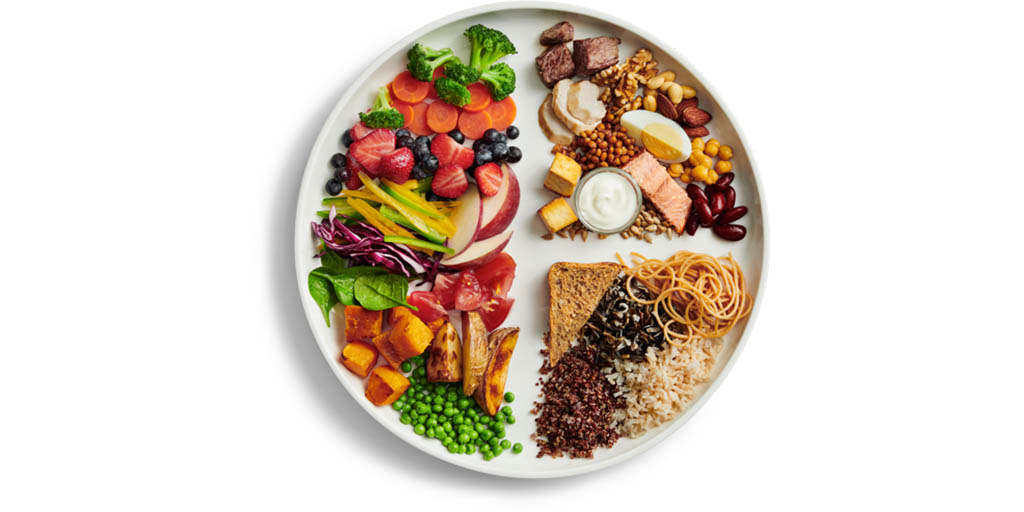The new Canada's Food Guide (Part 1)
 CREDIT: HEALTH CANADA (CANADA.CA)
CREDIT: HEALTH CANADA (CANADA.CA)Canada’s Food Guide has been around since 1942 when it was called Canada’s Food Rules.
It was and still is, meant to be a tool to educate consumers about healthy eating.
It is not a diet or meal plan and it is meant for the general population. Those with special considerations such as allergies, chronic illness, high-level athletic goals, or cultural needs should consult an expert such as a medical doctor that specializes in nutrition, a dietitian or a naturopath.
The new Food Guide was just released this past January and is a much better depiction of where we are in society today then its predecessor.
It took them several years to come up with this guide and they also involved public and professional input (I participated in two different surveys as well as a phone interview over the course of 2017 to 2018, asking about my client needs, my opinions about the future and past guide and also what I though about the wording of the new guide).
Now that it’s here, let’s take a closer look at what everything means.
When you visit food-guide.canada.ca/en/, you will see a bright and colourful plate of food as well as some tips.
Tip 1: Have plenty of vegetables and fruits. Approximately 50 per cent of your meal or snack should come from vegetables or fruit. The reason this is so important is because this is where the majority of our antioxidants and phytochemicals come from, which is the nutrients we need in order to stay healthy, fight illness, recover quickly and prevent or prolong disease. This is a struggle for many who might consume one to two servings a day or less of vegetables and fruit. Many people see this as expensive, and it can be if you are always buying fresh and the majority of the items are out of season. Check out www.ontario. ca/foodland/foodland-ontario to see what is currently in season. You can also buy frozen (especially if you are going to cook it anyways, or add frozen fruits to smoothies / baked goods), canned (low to no sodium, rinsed and drained well) and look for the reduced items cart in your local grocery store (many of the items can be salvaged and frozen for future meals and the really ripe / bruised parts can be cooked and made into a vegetable stock for soup). Vegetables and fruits provide us with healthy carbohydrates for energy, protein for muscle repair and fats for thermoregulation, metabolism, neurological function and sustained energy.
Tip 2: Eat Protein Foods.
This is somewhat misleading as it points to some obvious protein sources such as meat, nuts, seeds, eggs, milk and tofu. You can also get protein from a variety of vegetables, fruits and whole grains. Protein is essential for tissue and muscle repair, metabolism, satiety, and growth. We only need about 20 to 30 per cent of our daily calories from protein. Too much protein can cause serious issues in the digestive and endocrine systems. Your body will only take what it needs and it gets rid of the rest but too much is very hard for your body to process.
Tip 3: Make water your drink of choice. We have been so used to hearing, “drink eight to 10 glasses a day of water”. This is misleading because how big is the glass? How often should you drink water? What is the best type of water? I’m sure there are more questions, so the simple statement of make water your drink of choice is saying, choose it the most often, when you are thirsty, when you are exercising, when the temperature is high or the air is dry. Try a drink journal and tally up the amount of 250 millilitre cups you have of every liquid you consume through the week. Where does water rank?
Tip 4: Choose Whole Grain Foods. This is great advice, if you really understand what that means. The picture shown on the website is better that the previous Food Guide which depicted mostly processed grains. This picture still contains processed grains such as bread and pasta. But at least they look like they are made with whole grains. The issue with processed grain products, even the ones that seem to be the healthier choice, is that most contain lots of sugar, salt and other added ingredients like preservative to make them last longer. When you look at the ingredient label, you should see the whole grain listed first (not enriched, bleached, or cracked flour). Read carefully and look for things like sugar, molasses, or anything ending in “ose”; steer clear of these. Look for natural sugars, but far down the list as this means there are less of them (honey, cane, coconut sugar, stevia, agave).
That’s it for page one of the Food Guide. Next issue I’ll break down the tips on page two. What are your thoughts on the Guide? Email me at karen.carroll@nullfanshawec.ca.
Karen Nixon-Carroll is the Program Manager at Fanshawe's Fitness Centre.














